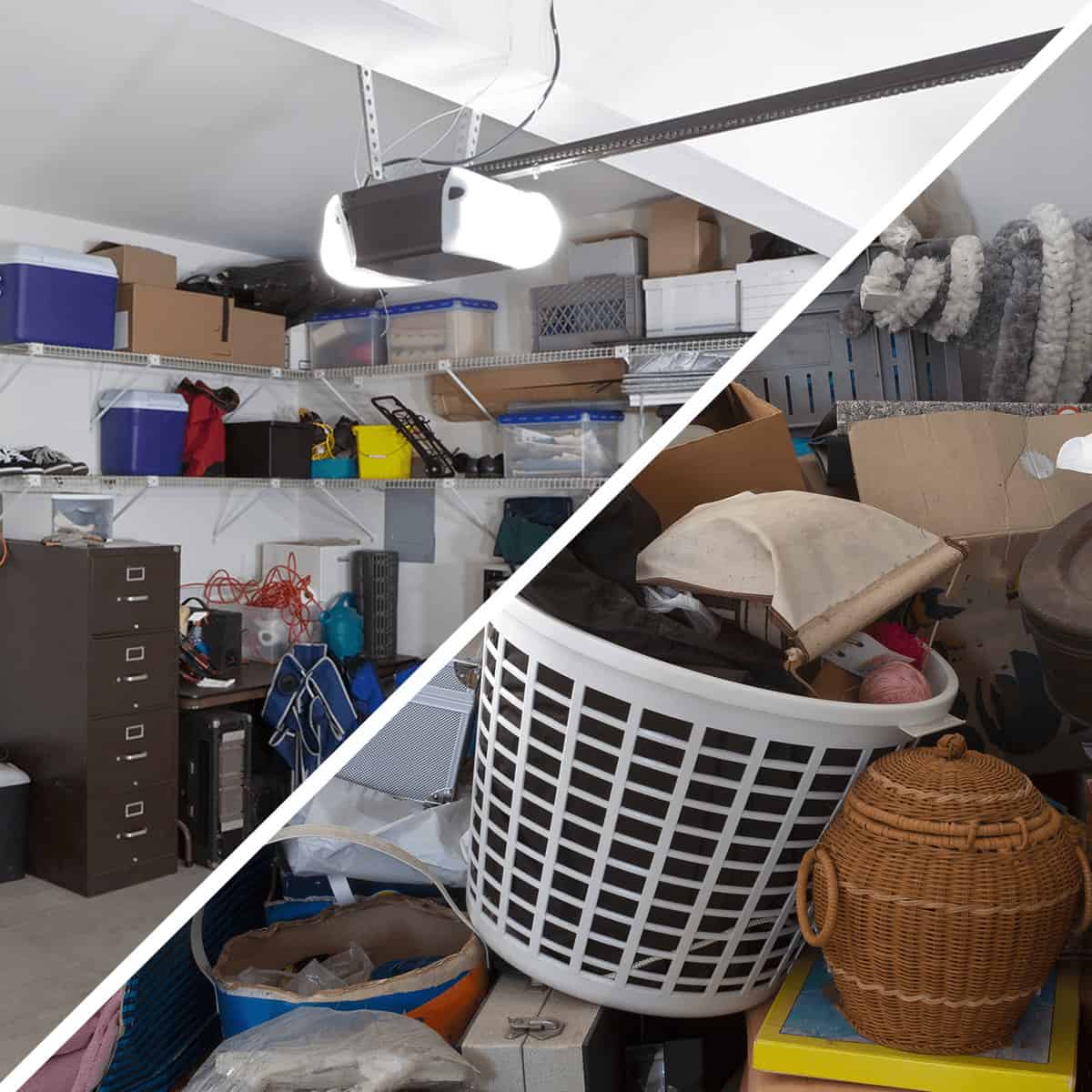Hoarding vs. Clutter: A Parent’s Guide to Understanding the Difference
Hey there, marvelous moms and dashing dads! Are you sometimes stepping into a room in your home and thinking, “Yikes! Where did all this stuff come from?” We get it; with the hustle and bustle of family life, things can pile up quickly. But here’s a little secret: There’s a fine line between a cluttered room and a hoarding situation. Don’t worry, our delightful guide is here to sprinkle some clarity on the subject!
What Is Clutter?
First things first, let’s tidy up our understanding of clutter. Imagine your kiddo’s science project sprawled across the dining table or a mountain of laundry waiting to be folded – that’s clutter. It’s the everyday accumulation of items that just haven’t found their way back home yet. Clutter is like that guest who overstays – annoying but not alarming!
And Then, What Is Hoarding?
Now, on to the elephant in the room – hoarding. Unlike clutter, which is temporary and manageable, hoarding is the persistent difficulty in parting with possessions, regardless of their actual value. Items pile up to the point where rooms are no longer usable for their intended purposes. If you’re noticing pathways through piles, or rooms that can’t be lived in, it’s time to consider that clutter might have crossed a line.
Understanding the Impact on Families
As parents navigating the dynamic world of home organization, it’s essential to understand the impact of both clutter and hoarding. Clutter can make your home feel chaotic and can nibble away at your peace of mind. But hoarding? That’s a whole different ballgame. It can significantly affect family life, creating not just a physical barrier but also an emotional one. It’s essential to approach it with a mixture of empathy and action.
Clutter: A Snapshot
- Temporary: Often fluctuates with daily activities.
- Manageable: With some time and effort, it can be tidied up.
- Mild annoyance: May disrupt the home environment, but doesn’t completely stop usage of a space.
Hoarding: A Deeper Dive
- Persistent: Continues to accumulate over time without periods of resolution.
- Difficult to manage: May require professional help for cleanup and emotional support.
- Significant impact: Can lead to severe disruptions in the home environment and relationships.
Distinguishing Between Hoarding and Clutter
The key to deciphering the tangle of toys and trinkets is to look at the longevity and level of disruption. A week of unwashed laundry or a table of school papers during exams could be clutter. But if items are piling up for months, covering surfaces and floors, and causing distress or embarrassment, these are signs that hoard-like behavior might be taking place.
When to Seek Help
If you suspect that hoarding might be afoot, it’s important not to navigate these murky waters alone. Seeking guidance from professionals, understanding the psychological underpinnings, and embracing patience can make all the difference in safely steering back to the shores of a well-organized home.
Ready to embark on a journey that clears the fog between hoarding and clutter? Let’s set sail on an adventure of understanding and practical strategies, and turn your home into the harmonious haven it’s meant to be! Understanding is just the beginning, and action is the magic that transforms spaces and hearts.
Stay tuned for the next part of this guide where we will delve into strategies for addressing both clutter and hoarding, helping to ensure a happier, healthier environment for your family. The ultimate goal is peace, happiness, and a home where every member can thrive. Because, dear parents, your family’s well-being is the true treasure at the end of the rainbow, and getting there can be an incredibly rewarding journey.

Five Things Parents Should Know in Preparing for Hoarding vs. Clutter
1. Recognizing the Signs
Being able to distinguish between clutter and hoarding is crucial. Clutter is often confined to specific areas and doesn’t prevent the use of your space for its intended purpose. Hoarding, on the other hand, is characterized by the accumulation of an excessive number of items, even rubbish, leading to unmanageable living conditions. Look for signs like difficulty using furniture or appliances and blocked exits to indicate a hoarding issue.
2. The Emotional Factor
Understand that both clutter and hoarding can be emotionally charged. Clutter can cause stress and reduce the quality of your living space, affecting everyone’s mood and productivity. Hoarding, often linked to deeper psychological issues like anxiety, depression, or OCD, can be even more distressing and may require mental health intervention. Work to create a judgement-free zone that fosters open and honest communication.
3. The Role of Habit
Both clutter and hoarding are often tied to habits. Start fostering positive habits in your children from an early age. Teach them about the joy of donating, the beauty of a clean space, and how to let go of things they no longer need. Set regular decluttering routines and lead by example within your household.
4. The Health Implications
Know that a cluttered or hoarded space can have serious health ramifications. Dust, mold, and mildew can accumulate, exacerbating allergies and respiratory issues. In hoarding situations, the risk of fire hazards, pests, and the inability to maintain a hygienic environment can be particularly high. A clean and orderly home is pivotal for physical wellbeing.
5. Getting Professional Help
If you recognize hoarding behaviours, don’t hesitate to seek help. Organizational professionals, therapists specializing in hoarding, and support groups can offer guidance. Hoarding is not simply about being disorganized; it often requires a comprehensive approach, including therapy to address the emotional aspects of the disorder.
Armed with this knowledge, you can better prepare for keeping your home a loving, usable space. Remember that empathy, patience, and professional support are your allies on this journey. Your awareness and proactive measures today can pave the way for a brighter, tidier tomorrow for your entire family.
And, as you venture forward, keep an eye out for our upcoming guide on practical strategies for handling clutter and hoarding, including how-to tips, organizational tools, and ways to maintain a happy, harmonious household. Together, we’ll conquer the chaos and celebrate the joy of a tidy home!
See more great Things to Do with Kids in New Zealand here. For more information see here
Disclaimer
The articles available via our website provide general information only and we strongly urge readers to exercise caution and conduct their own thorough research and fact-checking. The information presented should not be taken as absolute truth, and, to the maximum extent permitted by law, we will not be held liable for any inaccuracies or errors in the content. It is essential for individuals to independently verify and validate the information before making any decisions or taking any actions based on the articles.




